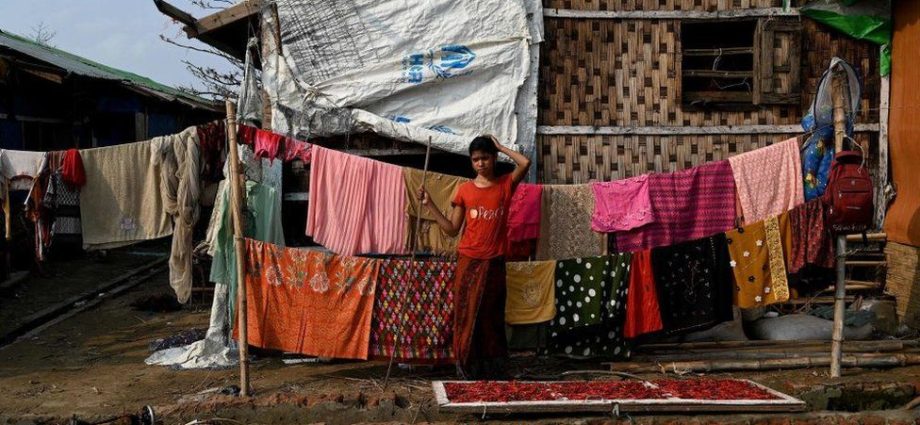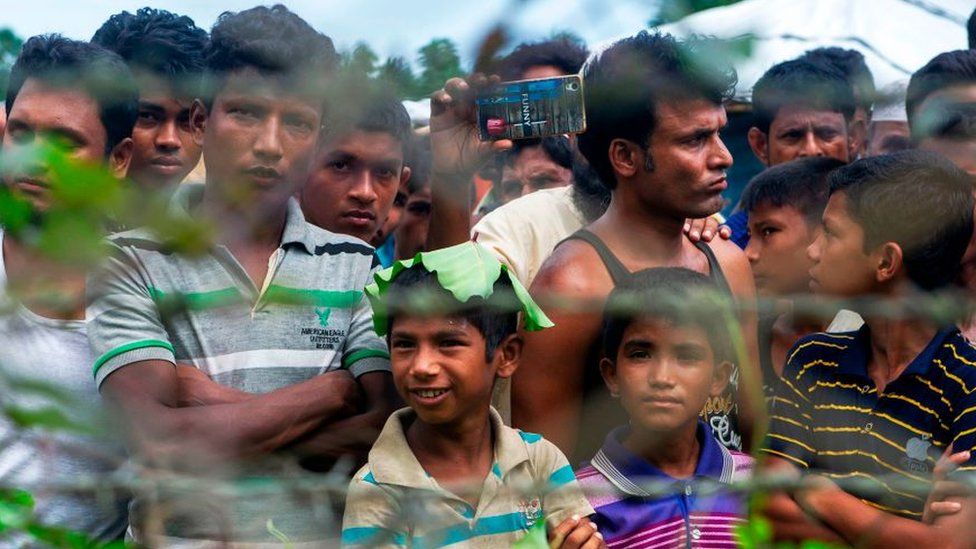
Nearly seven years after the Myanmar military killed thousands of Muslim Rohingyas, in what the UN called “textbook ethnic cleansing”, it wants their help.
From interviews with Rohingyas living in Rakhine State the BBC has learned of at least 100 of them being conscripted in recent weeks to fight for the embattled junta. All their names have been changed to protect them.
“I was frightened, but I had to go,” says Mohammed, a 31-year-old Rohingya man with three young children. He lives near the capital of Rakhine, Sittwe, in the Baw Du Pha camp. At least 150,000 internally displaced Rohingyas have been forced to live in IDP camps for the past decade.
In the middle of February the camp leader came to him late at night, Mohammed said, and told him he would have to do military training. “These are army orders,” he remembers him saying. “If you refuse they have threatened to harm your family.”
The BBC has spoken to several Rohingyas who have confirmed that army officers have been going around the camps and ordering the younger men to report for military training.
The terrible irony for men like Mohammed is that Rohingyas in Myanmar are still denied citizenship, and subjected to a range of discriminatory restrictions – like a ban on travel outside their communities.
In 2012 tens of thousands of Rohingyas were driven out of mixed communities in Rakhine State, and forced to live in squalid camps. Five years later, in August 2017, 700,000 fled to neighbouring Bangladesh, after the army launched a brutal clearance operation against them, killing and raping thousands and burning their villages. Some 600,000 of them still remain there.
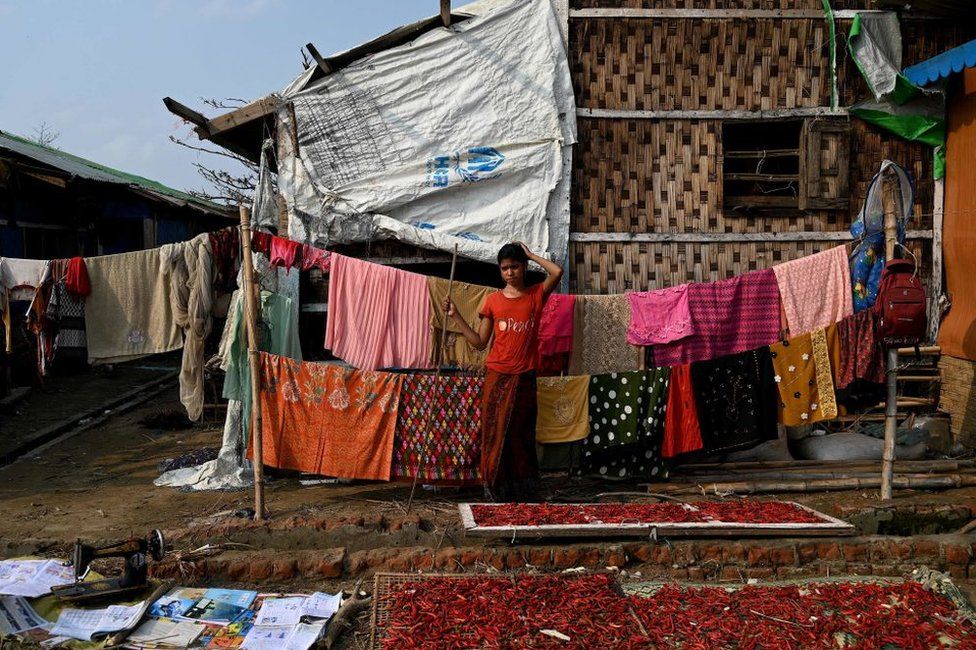
Myanmar is now facing a genocide trial at the International Court of Justice in the Hague over its treatment of the Rohingyas.
That the same army is now forcibly recruiting them is a telling sign of its desperation, after losing huge swathes of territory in Rakhine recently to an ethnic insurgent group called the Arakan Army. Dozens of Rohingyas in Rakhine have been killed by military artillery and aerial bombardments.
The military has also suffered significant losses to opposition forces in other parts of the country. Large numbers of soldiers have been killed, wounded, surrendered or defected to the opposition, and finding replacements is difficult. Few want to risk their lives propping up an unpopular regime.
And the Rohingyas fear that is the reason they are being targeted again – to be cannon fodder in a war the junta seems to be losing.
Mohammed said he was driven to the base of the 270th Light Infantry Battalion in Sittwe. Rohingyas have been prohibited from living in the town since they were driven out during the 2012 communal violence.
“We were taught how to load bullets and shoot,” he said. “They also showed us how to disassemble and reassemble a gun.”
In a video seen by the BBC another group of Rohingya conscripts can be seen being taught how to use BA 63 rifles, an older standard weapon used by the Myanmar armed forces.
This video can not be played
To play this video you need to enable JavaScript in your browser.
Mohammed was trained for two weeks, then sent home. But after just two days he was called back, and put on a boat with 250 other soldiers and transported five hours up-river to Rathedaung, where a fierce battle with the Arakan Army was under way for control of three hilltop military bases.
“I had no idea why I was fighting. When they told me to shoot at a Rakhine village, I would shoot.”
He fought there for 11 days. They were desperately short of food, after a shell fell on their supply hut. He saw several Rohingya conscripts killed by artillery and he was injured by shrapnel in both legs, and taken back to Sittwe for treatment.
On 20 March the Arakan Army released photos from the battle, after it had taken control of the three bases, showing several corpses, at least three of them identified as Rohingyas.
“While I was in the middle of the battle I was terrified the whole time. I kept thinking about my family,” Mohammed said. “I never thought I would have to go to war like that. I just wanted to go home. When I got home from the hospital I hugged my mother and cried. It felt like being born again from my mother’s womb.”
Another conscript was Hussain, from Ohn Taw Gyi camp, which is also near Sittwe. His brother Mahmoud says he was taken away in February and completed his military training, but he went into hiding before they could send him to the front line.
The military denies using Rohingyas to fight its battles with the Arakan Army. General Zaw Min Tun, the junta spokesman, told the BBC that there was no plan to send them to the front line. “We want to ensure their safety, so we have asked them to help with their own defence,” he said.
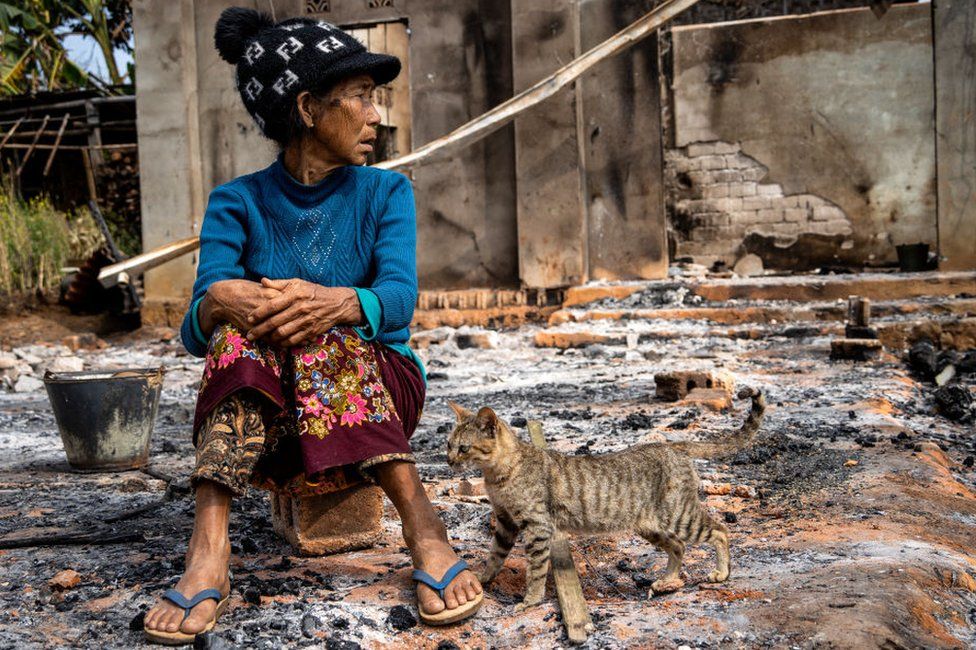
But in interviews with the BBC, seven Rohingyas in five different IDP camps near Sittwe all said the same thing: that they know of at least 100 Rohingyas who have been recruited this year and sent off to fight.
They said teams of soldiers and local government officials came to the camps in February to announce that the younger men would be conscripted, at first telling people they would get food, wages and citizenship if they joined up. These were powerful lures.
Food in the IDP camps has become scarce and expensive as the escalating conflict with the Arakan Army has cut off the international aid supplies. And the denial of citizenship is at the heart of the Rohingyas’ long struggle for acceptance in Myanmar, and one reason they suffer systematic discrimination, described by human rights groups as similar to apartheid.
However, when the soldiers returned to take the conscripted men away, they retracted the offer of citizenship. When asked by the camp residents why they, as non-citizens, should be subjected to conscription, they were told that they had a duty to defend the place where they lived. They would be militiamen, not soldiers, they were told. When they asked about the offer of citizenship, the answer was “you misunderstood”.
Now, according to one camp committee member, the army is demanding new lists of potential recruits. After seeing and hearing from the first group to come back from the front line, he said, no-one else was willing to risk being conscripted.
This video can not be played
To play this video you need to enable JavaScript in your browser.
So the camp leaders are now trying to persuade the poorest men, and those with no jobs, to go, by offering to support their families while they are away, with donations raised from other camp residents.
“This conscription campaign is unlawful and more akin to forced labour,” said Matthew Smith, from the human rights group Fortify Rights.
“There’s a brutal and perverse utility to what’s happening. The military is conscripting the victims of the Rohingya genocide in an attempt to fend off a nationwide democratic revolution. This regime has no regard for human life. It’s now layering these abuses on top of its long history of atrocities and impunity.”
By using Rohingyas in its battles against the advancing Arakan Army, the Myanmar military threatens to reignite communal conflict with the ethnic Rakhine Buddhist population, much of which supports the insurgents.
It was friction between the two communities which in 2012 caused the expulsion of tens of thousands of Rohingyas from towns like Sittwe. In 2017, ethnic Rakhine men joined in the army’s attacks on the Rohingyas.
Tension between the two communities has eased since then.
The Arakan Army is fighting for an autonomous state, part of a wider campaign with other ethnic armies and opposition groups to overthrow the military junta and create a new, federal system in Myanmar.
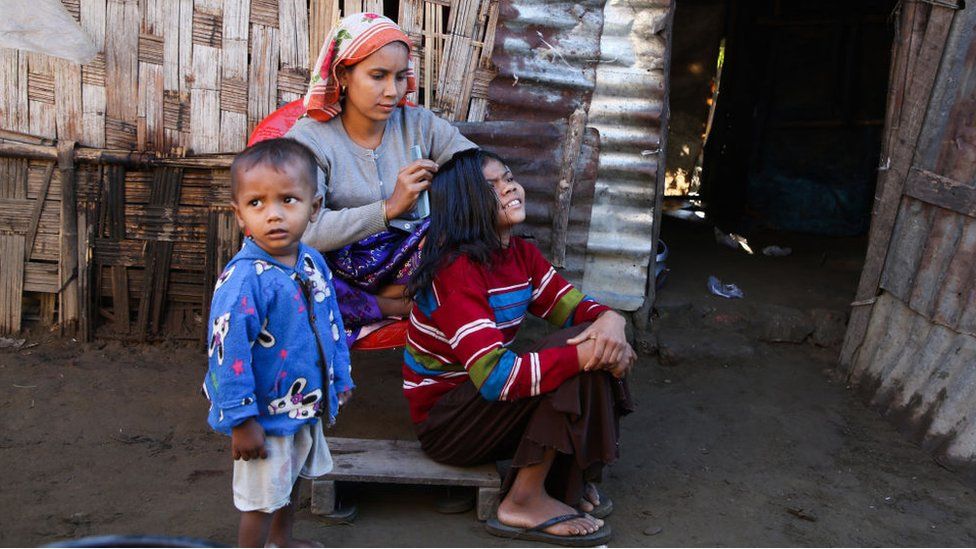
Now on the brink of victory in Rakhine State, the Arakan Army has talked about giving citizenship to all who have lived there recently, implying that it might accept the return of the Rohingya population from Bangladesh.
The mood has now changed. A spokesman for the Arakan Army, Khaing Thukha, told the BBC that they viewed Rohingyas being conscripted to fight for the junta as “the worst betrayal of those who had recently been victims of genocide, and of those fighting for liberation from dictatorship”.
Pro-military media have also been giving publicity to what appear to have been Rohingya protests in Buthidaung against the Arakan Army, although local people told the BBC they suspected these were organised by the army in an attempt to divide the two groups.
The Rohingyas are now forced to fight for an army that does not recognise their right to live in Myanmar, thereby alienating the ethnic insurgents who may soon control most of Rakhine. Once targeted by both, they are now caught between the two sides.
Mohammed has been given a certificate by the army, stating that he has fought in battle on their side. He has no idea what value it has, nor whether it exempts him from further military service. It could well get him into trouble with the Arakan Army if it continues its advance towards Sittwe and his camp.
He is still recovering from his injuries, and says he is unable to sleep at night after his experience.
“I’m afraid they will call me again. This time I came back because I was lucky, but next time I am not sure what will happen.”

